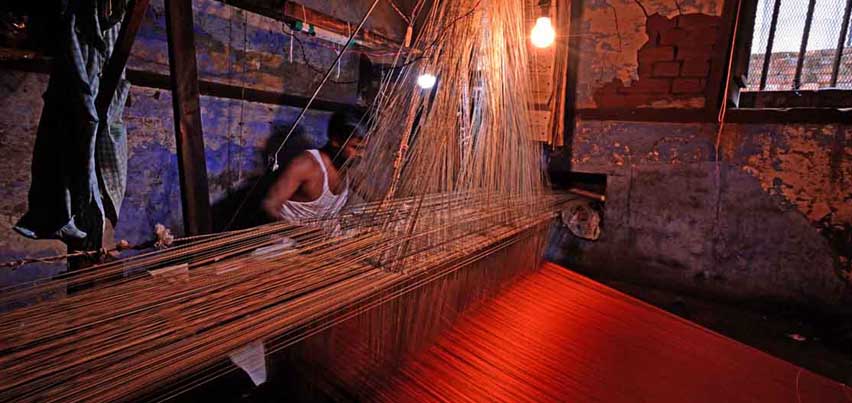The city of Varanasi (also known as Benares) is famous for its handicrafts, including weaving. According to estimates there are about 100000 weavers in Varanasi, 80% of whom are Muslims. ‘Benarasi’ saris are particularly famous, made of finely woven silk with a unique additional embellishment (called supplementary weft) upon the regular weave. Benarasi saris are sold for a high price due to the skill that goes into making them. However, the weaving industry in Benares operates on a feudal structure. Whilst some weavers in Varanasi belong to producer collectives, we found these to be weak and unorganised. The Varanasi Weavers Hub has therefore been set up under the project to bring Master Weavers together to avoid the middlemen and sell directly to traders, thereby increasing the amount of money they get for their highly skilled work. It is also a centre for learning and facilitation. The weavers usually weave on a pit loom. The warp yarn is rolled on a large cylindrical structure. It is on this that the dyed tana yarn is prepared for weaving. The length of the yarn is loaded on the cylinder depends on the length of the saree to be made. Then all the warp threads are threaded in the heald eyelet in the loom. It is in this that the threads move up and down. The reed functions like a comb that controls the separation of the tana threads. The open space between each wire is called dent. Helped by a hook, the warp thread passes through the heald and then the dent. This is the denting process. In this process, different techniques such as jangla, jamdani, tanchoi, kharua, etc. are used to produce different types of patterns. The final aspect of a Benarasi saree is the ‘zari’. This is a golden thread that is produced by melting silver ingot. It is 13 microns in diameter. The thread is made thinner and electroplated with gold. The origin of this old technique has been obscured by time, but the Moghul influence is seen in the motifs, which often depict floral patterns and hunting scenes.
India Varanasi
tourism

